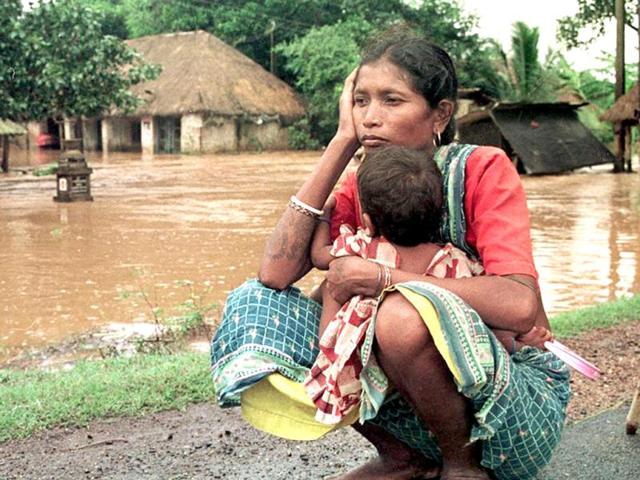Family planning: A cost effective-development tool
Low spending on family planning results in high maternal and infant mortality rates and affects the economy adversely, writes Poonam Muttreja.
Family planning is the surest and the quickest way to better the physical and economic health of a nation. As the Narendra Modi government rolls out its budget for 2016-17, there is an expectation that the amount earmarked for family planning will be adequate to meet the very urgent needs of a young nation.

After a series of budget cuts faced by the health sector last year, which affected resource availability on the family planning front as well, it has become all the more imperative that this time sufficient provision is made. If not, the cost of inaction in family planning would be compounded for the country. This will translate into not just loss of health and life, but of education opportunities, livelihoods, earnings and the overall well-being of our people.
Family planning is increasingly being recognised as a cost effective development option, one that improves the health of the people and consequently the labour force, boosts the economy and at the same time gives women the opportunity to participate fully as citizens. The recently concluded International Conference on Family Planning saw global interest with participation from 80 countries, keen to learn from each other on how to make it work.
Addressing the Indian caucus at the conference, JP Nadda, minister of health and family welfare, had committed to making available improved quality family planning services and expanding the choice of contraceptives for spacing — a dire need for young couples. The recent decision of the Ministry to introduce injectables in the public health system is a good first step. A lot more needs to be done.
Here are some telling figures: Forty six per cent of eligible couples do not practise family planning. Almost 21% of births every year in the country are unplanned, because the people do not have access to contraceptives. Almost 60% of births (1.6 crore births) every year have a birth interval of less than 36 months, the ideal gap that gives a woman time to recoup ensuring better health for herself and the newborn. As many as 6.3% of the births (17 lakh births) are to girls too young to bear children — in the age group of 15-19 years. The consequence of all this is that over 150 women continue to die every day due to pregnancy related causes and many more suffer great morbidity.
The country has been paying a heavy price for the persistent unmet need for family planning. Too early, too quick and too many pregnancies take a toll on women and girls, especially when quality of care is inadequate. Unplanned pregnancies make for a higher infant mortality rate and poor health for both mother and child. Moreover, the reverberation of a maternal death is large, directly impacting the health, education and well-being of her children. The economic health of the country suffers, as a person in the prime of life is lost.
A study commissioned by Population Foundation of India (PFI) has revealed that the cost of unplanned children ranges from 2% of state GDP in Tamil Nadu to 8% in Uttar Pradesh, to 14% of state GDP in Bihar. The costs include that on child birth and rearing as well as the total government expenditure on the unplanned children.
India’s spend on health care was only 1.04% of the GDP in 2013-14, which is about 4% of the total government expenditure. China spends 2.8%, Russia 3.6%, South Africa 4.1% of their GDP. The Finance Commission’s move to increase the state’s share in taxes from 32% to 42% in 2015-16 may have led to states having more funds to spend in the social sector. But states like Uttar Pradesh, Bihar, Odisha and Andhra Pradesh, which need to put a greater focus on health, get only meagre amounts, not enough to meet the necessary expenditure on health and family welfare. Moreover, as states have competing priorities in human resources and infrastructure, diversion of funds from the health sector is a reality.
The 2014-15 budget saw an 87% reduction for family welfare compared to the earlier year. In the 2015-16 budget, the family welfare share was further reduced by 34%. Given the poor health indicators in the country, these cuts were surprising. Under the National Health Mission (NHM), the share of family planning is as low as 2% of the total NHM budget and 6% of the reproductive and child health (RCH) budget.
The effect of not spending enough on health and family planning in particular can be seen in the high maternal and infant mortality rates India faces, among the worst in the world. It can be seen in poor infrastructure, insufficient access and poor healthcare services. The result — 70% of all out-of-pocket expenditure on health by our people is in the private sector, driving nearly 50 million people into debt and poverty every year.
A PFI study shows that India needs Rs 187.3 billion in the coming four years (almost Rs 47 billion per year) if it has to cover 48 million new users of contraceptives by 2020 (all by the public health system), a commitment made by India at London Summit on Family Planning in 2012. This is Rs 113.8 billion more than what is projected by the government budget allocation.
It is time the government allocates the much needed resources and gives family planning a boost. Family planning is a key investment. Let us use it to our advantage.
Poonam Muttreja is executive director, Population Foundation of India.
The views expressed are personal





